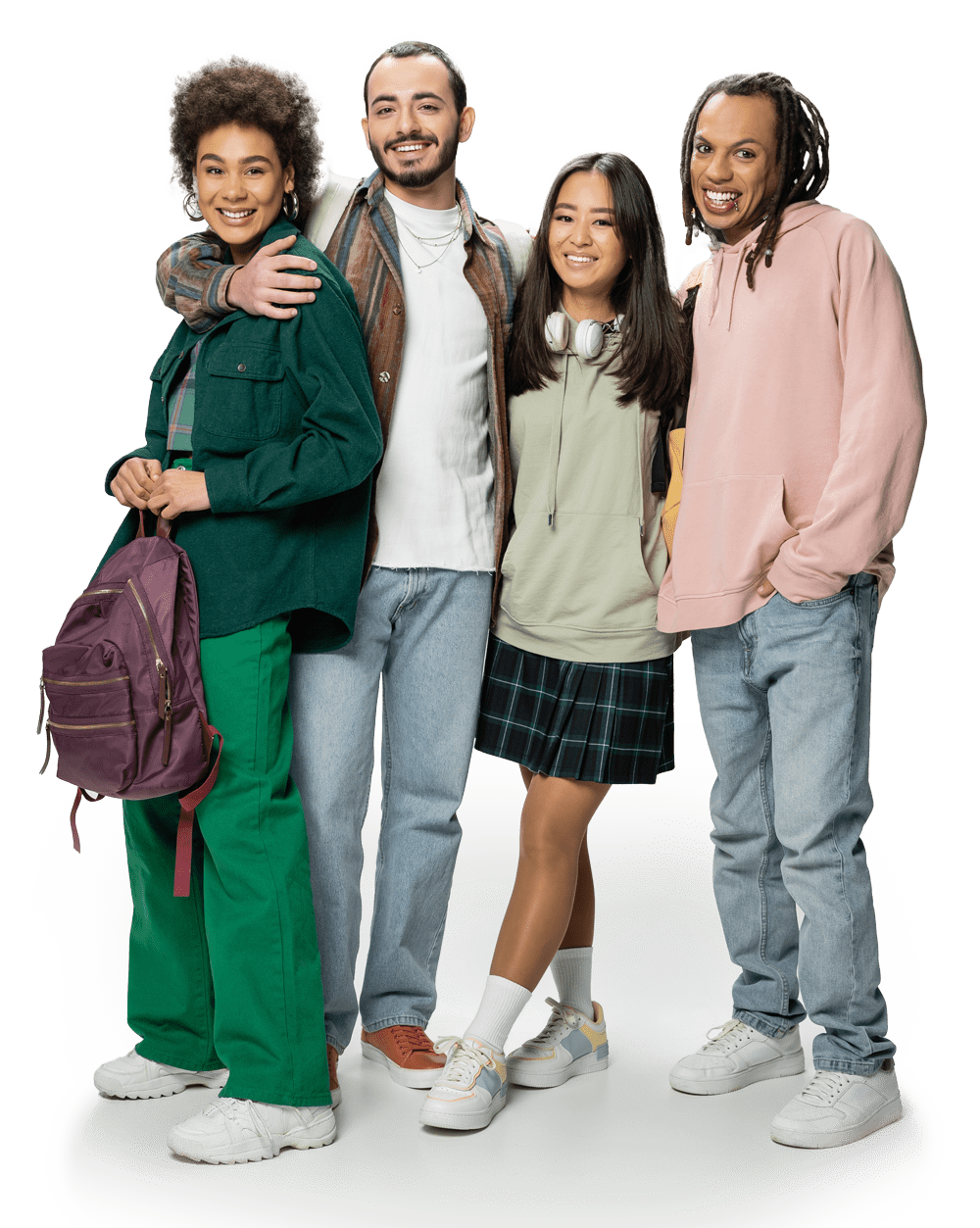
Student
Visas
(F1-M1)
There are two categories of nonimmigrant visa for people who wish to study in the United States. The “F” visa is for academic studies, and the “M” visa is for non-academic or vocational studies.
F-1 Visas
Students who wish to attend college or any other academic institution in the United States, including primary and secondary schools or language training programs, require an F-1 visa.
The US Immigration Law prohibits the issuance of F-1 visas to students who are going to attend public elementary schools (grades Kindergarten to 8th grade) in the US, with approximate ages between 5 and 14 years, and to state-funded adult education programs, such as foreign language classes.
Students applying for an F-1 visa for public high schools (9th grade to 12th grade) between the ages of approximately 14 and 18 are limited to a maximum of 12 months of attendance at a public high school under an F-1 visa and must demonstrate and prove that payment for the full cost of education has been made before your visa can be processed.
Students who attend private primary and secondary schools are not affected by this regulation.
Foreign students may not use their relatives' US residence for the purpose of attending public high schools. These provisions do not apply to students who attend private high schools. The provisions also do not affect dependents of other categories of visa holders visiting the US, such as those covered by E, H, L, or J visas.
M-1 Visas
A student who wishes to continue a course of study which is not academic in nature at a vocational establishment or other recognized non-academic institution requires an M-1 view.

You can enter the F-1 or M-1 visa category if you meet the following criteria:
- You must be enrolled in an “academic” educational program, a language training program, or a vocational program.
- Your school must be approved by the Immigration and Customs Enforcement (ICE) Student and Exchange Visitor Program.
- You must be enrolled as a full-time student at the institution.
- Must be proficient in the English language or enrolled in courses to become proficient in English
- You must have sufficient funds available to cover your expenses throughout the proposed course of study.
- You must maintain a residence abroad that you have no intention of surrendering.

Background Requirements
Certificate of Eligibility
Applicants must first be accepted for the course they will study and certified as potential US students before submitting their visa applications. The required Certificate of Eligibility is Form I-20, which is issued and sent directly to the potential student by the qualifying institution or school.
SEVIS Registry
SEVIS is the Student Exchange Visitor Information System. All new students and exchange visitors to the United States must be registered in this system before applying for their visas, and most have to pay a fee to be registered. SEVIS seeks to maintain the integrity of student and exchange visitor visas by tracking student and exchange visa holders (and their family members) from the time they receive their initial documentation until they graduate. or leave school or conclude/or abandon their program.
Academic Preparation/English Level
The student applying for a visa must have sufficient academic preparation to follow the course he or she plans to take. Unless coming exclusively to an English language training program, the student must have a sufficient level of English to follow the course he or she intends to study, or the school must have made special arrangements for English language courses or provide the course in the student's native language. Please note that applicants intending to study in programs that require sufficient command of English will be interviewed in English.
Financial resources
Applicants must also prove that they have sufficient funds or that funds will be available from an identifiable and reliable financial source to cover all living and school expenses for the entire period of advanced study in the United States. Specifically, F-1 visa applicants must prove that they have sufficient funds already available to cover all expenses for the first year of study, and that adequate funds will be available for each subsequent year of study. Applicants for M-1 student visas must have evidence that sufficient funds are available to pay living and educational costs for the entire period of the planned stay.
Such evidence of financial resources may include a detailed statement of financial position from your parent's bank or account demonstrating that the necessary funds are available for transfer, evidence of scholarships and/or combination of financing, which meet the estimated total expenses, including tuition, for your proposed stay in the United States.
Entry and Length of Stay
The holder of an F-1 or M-1 student visa may enter the United States up to 30 days prior to the designated registration date on Form I-20A-B or I-20M. The 30-day limit does not apply to students returning to continue their studies; These can enter the US at any time. The holder of an F-1 visa may remain in the United States for up to 60 days after the completion of the course or practical training.
The holder of an M-1 visa may remain in the United States for the period of time it takes to complete the course of study as indicated on the I-20M form plus 30 days, or for one year, either of these are less.
Wives and Children
Spouses and/or children under 21 years of age who wish to accompany or join the primary visa holder in the United States for the duration of their stay require F-2 or M-2 visas. Couples must be legally married to qualify for such derivative visas. A copy of a marriage certificate and/or birth certificate of your children will be required. Wives, partners, and/or children who do not intend to live in the United States with the primary visa holder, but do visit them during vacations only, may be eligible and apply for a B-2 visitor visa. Spouses and children applying for an F-2 or M-2 derivative visa must complete their own Forms DS-160, and obtain their own Form I-20 from the vocational or educational institution. Although F-1 and M-2 visa applicants do not have to pay the US$200 SEVIS fee, they must still register with SEVIS. F-2 and M-2 visa applicants must appear at the Embassy for their own interviews (unless they are classified within the category of applicants who do not need an interview). Such applicants may be interviewed together or after the interview with the visa holder (for example, the student), but not before the main visa holder.
There is no requirement for the spouse and/or children of an F-1 or M-1 visa holder to apply for an F-1 visa if they wish to study in the US; They can study under an F-2 or M-2 visa. However, if they are qualified, they can apply for an F-1 visa.
The holder of an F-2 or M-2 derivative visa cannot work. If he or she is looking for employment, he or she needs to have the appropriate work visa.
Employment
It is possible that in certain circumstances the holder of an F-1 visa may obtain permission to work in the United States, if authorized by the Department of Homeland Security. M-1 visa holders may only engage in employment if it is required as part of their practical training and the employment has been approved in advance by the United States Citizenship and Immigration Services (USCIS).